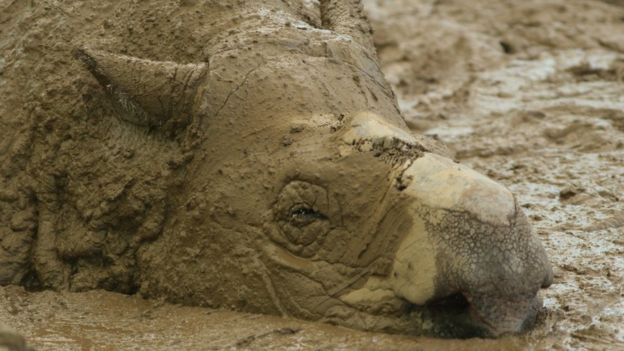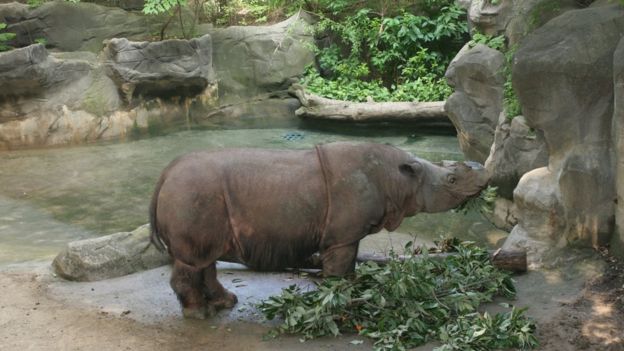Scientists have discovered many things by analyzing the genetics of the genus Sumatran genus, one of the most deadly mammals on Earth.
Analysis of the genetic map indicates that the number of these rhinoceroses is decreasing long ago.
The American group of researchers said that their problems began to occur when the rhinoceroses had been rescued in the last ice age. Then, the number of these rhinos began to decline due to the pressure of human society. At present there are less than 250 species of Sumatran genera considered to be in the world.
Terry Roth, a researcher for the Wildlife Conservation and Research Center of the Cincinnati Zoo and Botanical Gardens, said: "The destruction of these species began long before".
According to genetic sequencing data, Bloetzone was "the greatest challenge to Sumatran rhinoceroses," said Dr. Herman Mauss, a Marshall University researcher in West Virginia.
The world's most recent ice age, the Pliocene, is about 25,88,000 to 11,700 years ago.
Genetic residue
A well-known male rhinoceroscope in the Cincinnati Zoo was modeled and researched by the genome of its gene.
This rhododendron lived in the island since 1990. But four years ago, at the age of 33, she died. This is one of the highest numbers of Sumatran rhinos in the world. The genus of this rhino is stored in gene bank.
About 250,000 years ago, the number of these rhinos was 60,000.
Like other large mammals, the species of Sumatran rhinos have been found to have had appropriate habitats at the end of the Pliocene period about 12,000 years ago.
The land bridges that connect the Borneo, Java and Sumatra Islands to the Malay Peninsula and the Asian mainland have disappeared from the sea. This figure began to fall because of the change in the atmosphere over 9,000 years ago.
Professor Mace says, "At that time, the number of these lesser ones did not occur."
"The species of Sumatran rhythmic rhinoceroses are present in the threads of destruction," Roth said, "we need to work more on them."
Once upon a time Sumatran rhinoceros spread from the foothills of Bhutan and the northeast Himalayas to southern China, Myanmar, Thailand, Cambodia, Laos, Vietnam and Malay Peninsula and Indonesia's Sumatra and Borneo Islands.
This rhododendron which is now only available in Sumatra is included in the list of animals that are endangered by the International Union for Nature Conservation (IUCN).


Comments
Post a Comment